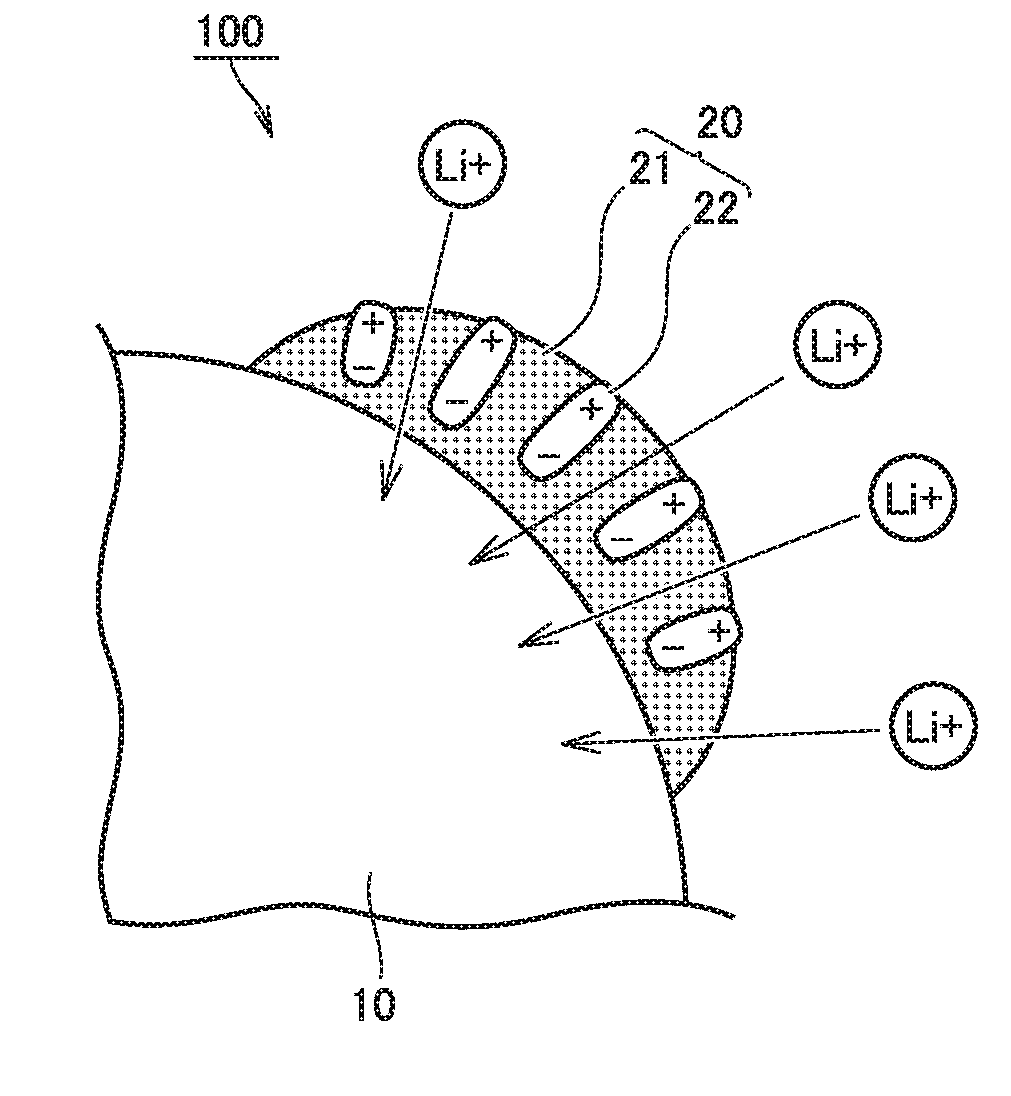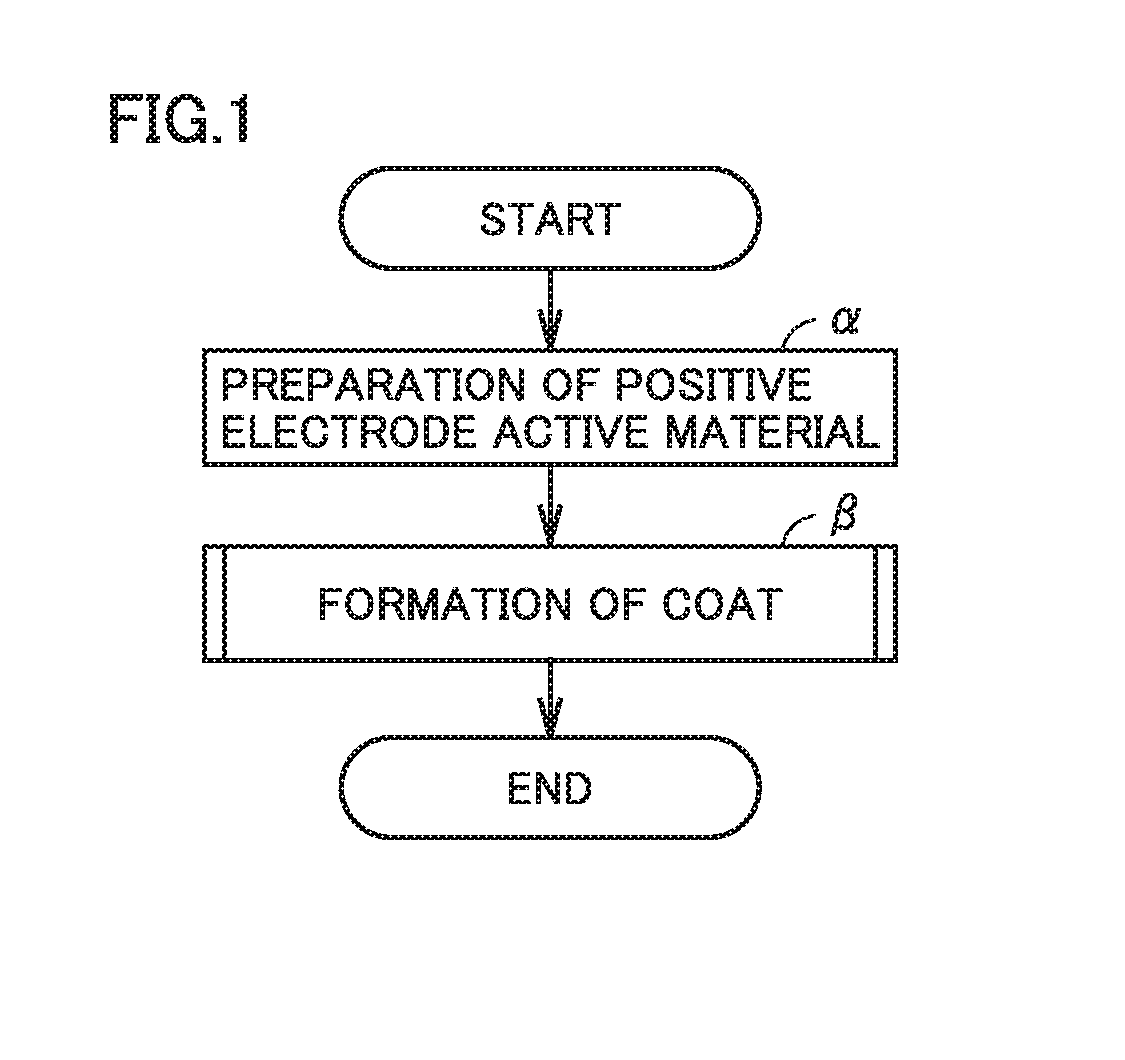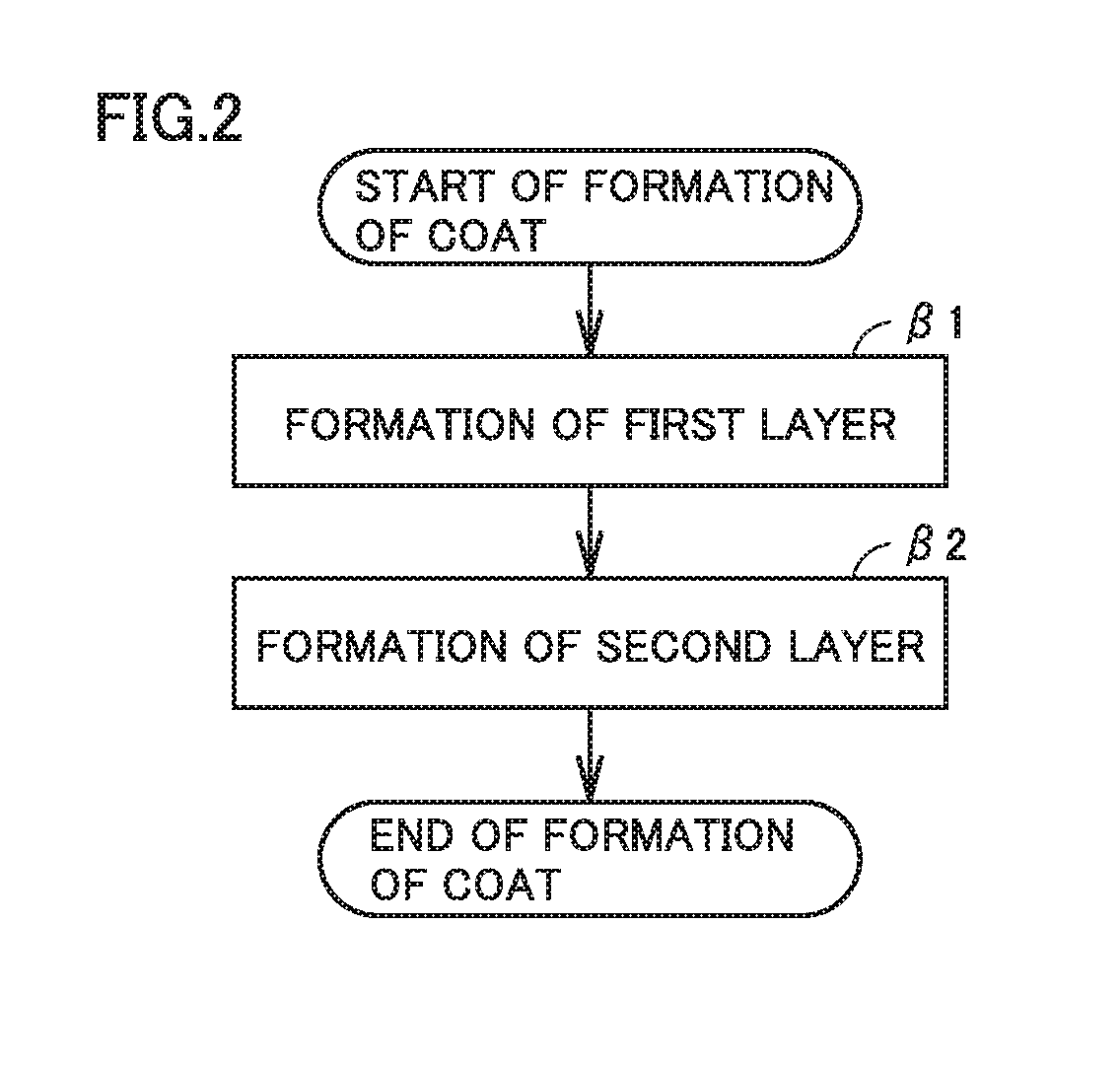Method of manufacturing positive electrode material for lithium ion secondary battery and positive electrode material for lithium ion secondary battery
a technology of lithium ion secondary battery and positive electrode material, which is applied in the direction of cell components, electrochemical generators, transportation and packaging, etc., can solve the problems of reducing the effect of reducing the battery resistance, reducing the effective reaction area, and reducing so as to reduce the effective reaction area and reduce the resistance of the battery
- Summary
- Abstract
- Description
- Claims
- Application Information
AI Technical Summary
Benefits of technology
Problems solved by technology
Method used
Image
Examples
example 1
[0118]1-1. (α) Preparation of Positive Electrode Active Material
[0119]In the same procedure as that in Comparative Example 1, the positive electrode active material (NCM) was prepared.
[0120]1-2. (β) Formation of Coat
[0121]1-2-1. (β1) Formation of First Layer
[0122]Lithium alkoxide and tungsten alkoxide were dissolved in a solvent. Accordingly, a first layer precursor solution was prepared. This first layer precursor solution includes a precursor of Li2WO4. The positive electrode active material was introduced into the first layer precursor solution such that Li2WO4 became 0.25 mol % with respect to the positive electrode active material.
[0123]The positive electrode active material was agitated in the first layer precursor solution. Accordingly, a precursor to be the first layer is adhered on the surface of the positive electrode active material. The solvent was removed by drying. A dry solid matter was collected. The dry solid matter was heated at 700° C. By the heating, Li2WO4 was g...
examples 2 to 11
[0136]Each of positive electrode materials according to Examples 2 to 11 was manufactured in the same manner as in Example except that first and second layer precursor solutions were prepared to generate a Li ion conductor shown in Table 1 below, thereby manufacturing a battery.
examples 12 to 22
[0137]Each of positive electrode materials according to Examples 12 to 22 was manufactured in the same manner as in Examples 2 to 11 except that a second layer precursor solution was prepared to generate SrTiO3 as a ferroelectric substance, thereby manufacturing a battery.
[0138]
[0139]1. Activation of Battery and Measurement of Initial Capacity
[0140]At 25° C., the battery was fully charged by below-described constant current-constant voltage mode charging (CCCV charging). Next, the battery was discharged by below-described constant current mode discharging (CC discharging). The discharge capacity on this occasion was assumed as an initial capacity. It should be noted that “1C” represents current with which the full charge capacity is discharged in 1 hour.
[0141]CCCV charging: CC current=1 / 3C; CV voltage=4.2V; and cutoff current=1 / 50C
[0142]CC discharging: current=1 / 3C; and end voltage=3.0V
[0143]2. Evaluation of Battery Resistance
[0144]The SOC (State Of Charge) of the battery was adjust...
PUM
 Login to View More
Login to View More Abstract
Description
Claims
Application Information
 Login to View More
Login to View More - R&D
- Intellectual Property
- Life Sciences
- Materials
- Tech Scout
- Unparalleled Data Quality
- Higher Quality Content
- 60% Fewer Hallucinations
Browse by: Latest US Patents, China's latest patents, Technical Efficacy Thesaurus, Application Domain, Technology Topic, Popular Technical Reports.
© 2025 PatSnap. All rights reserved.Legal|Privacy policy|Modern Slavery Act Transparency Statement|Sitemap|About US| Contact US: help@patsnap.com



